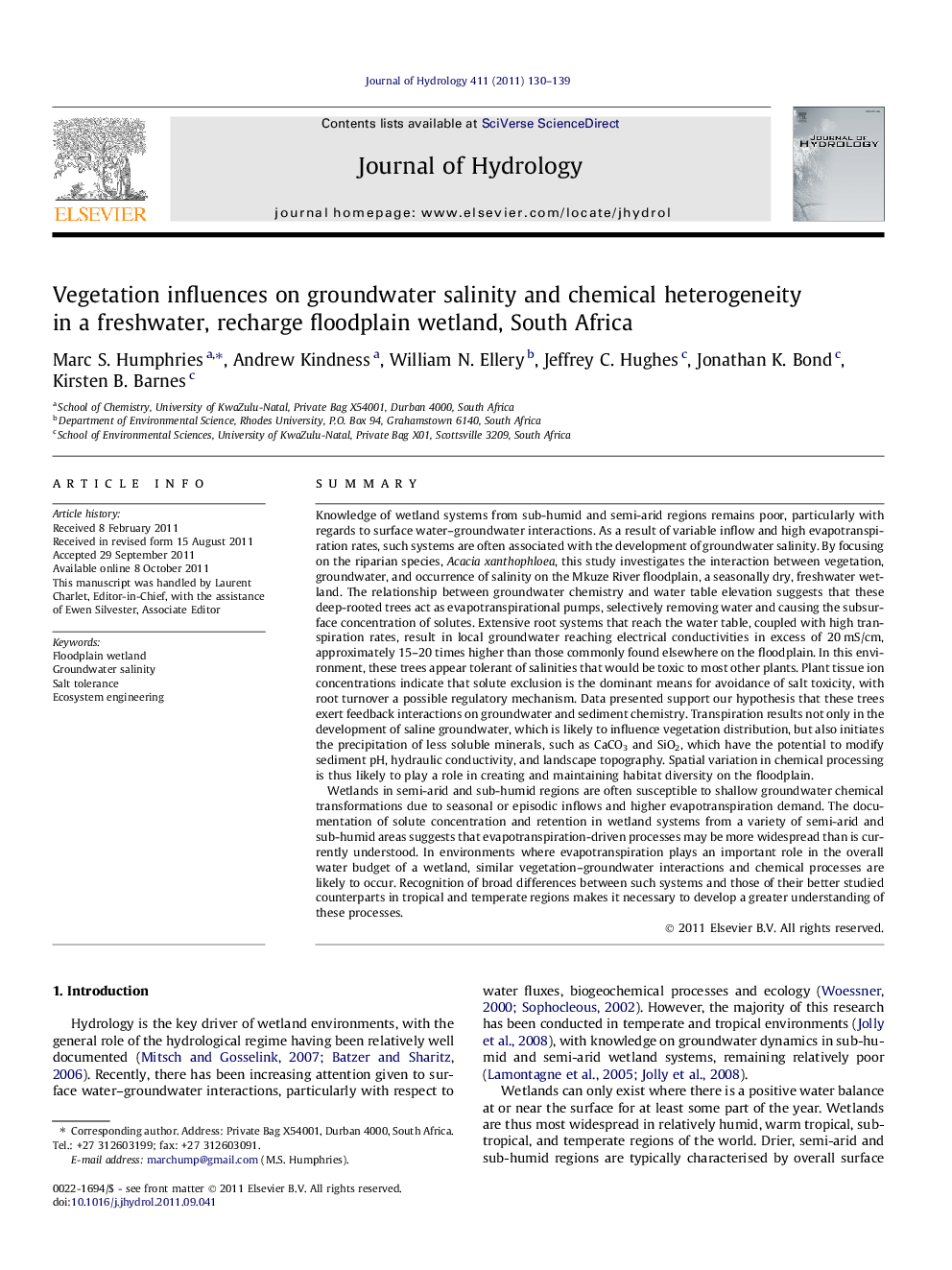| کد مقاله | کد نشریه | سال انتشار | مقاله انگلیسی | نسخه تمام متن |
|---|---|---|---|---|
| 4577352 | 1630007 | 2011 | 10 صفحه PDF | دانلود رایگان |

SummaryKnowledge of wetland systems from sub-humid and semi-arid regions remains poor, particularly with regards to surface water–groundwater interactions. As a result of variable inflow and high evapotranspiration rates, such systems are often associated with the development of groundwater salinity. By focusing on the riparian species, Acacia xanthophloea, this study investigates the interaction between vegetation, groundwater, and occurrence of salinity on the Mkuze River floodplain, a seasonally dry, freshwater wetland. The relationship between groundwater chemistry and water table elevation suggests that these deep-rooted trees act as evapotranspirational pumps, selectively removing water and causing the subsurface concentration of solutes. Extensive root systems that reach the water table, coupled with high transpiration rates, result in local groundwater reaching electrical conductivities in excess of 20 mS/cm, approximately 15–20 times higher than those commonly found elsewhere on the floodplain. In this environment, these trees appear tolerant of salinities that would be toxic to most other plants. Plant tissue ion concentrations indicate that solute exclusion is the dominant means for avoidance of salt toxicity, with root turnover a possible regulatory mechanism. Data presented support our hypothesis that these trees exert feedback interactions on groundwater and sediment chemistry. Transpiration results not only in the development of saline groundwater, which is likely to influence vegetation distribution, but also initiates the precipitation of less soluble minerals, such as CaCO3 and SiO2, which have the potential to modify sediment pH, hydraulic conductivity, and landscape topography. Spatial variation in chemical processing is thus likely to play a role in creating and maintaining habitat diversity on the floodplain.Wetlands in semi-arid and sub-humid regions are often susceptible to shallow groundwater chemical transformations due to seasonal or episodic inflows and higher evapotranspiration demand. The documentation of solute concentration and retention in wetland systems from a variety of semi-arid and sub-humid areas suggests that evapotranspiration-driven processes may be more widespread than is currently understood. In environments where evapotranspiration plays an important role in the overall water budget of a wetland, similar vegetation–groundwater interactions and chemical processes are likely to occur. Recognition of broad differences between such systems and those of their better studied counterparts in tropical and temperate regions makes it necessary to develop a greater understanding of these processes.
► We investigate the vegetation–groundwater interactions in a freshwater wetland.
► Evapotranspiration is identified as a key driver of groundwater salinity.
► We highlight potential effects on wetland ecology and morphology.
Journal: Journal of Hydrology - Volume 411, Issues 1–2, 6 December 2011, Pages 130–139